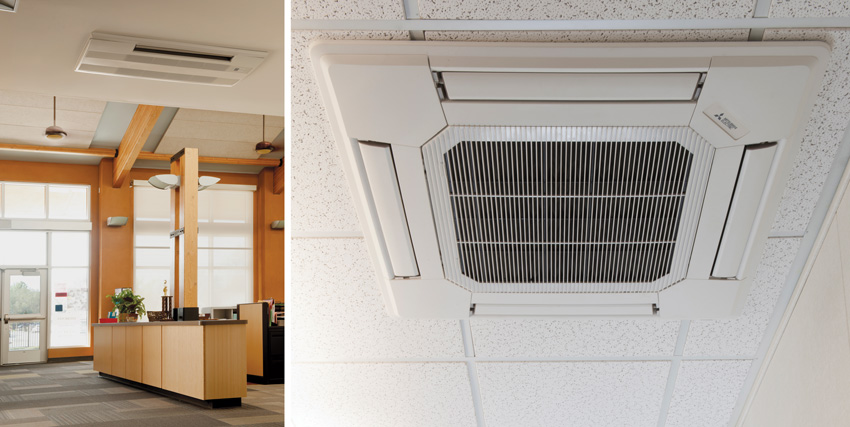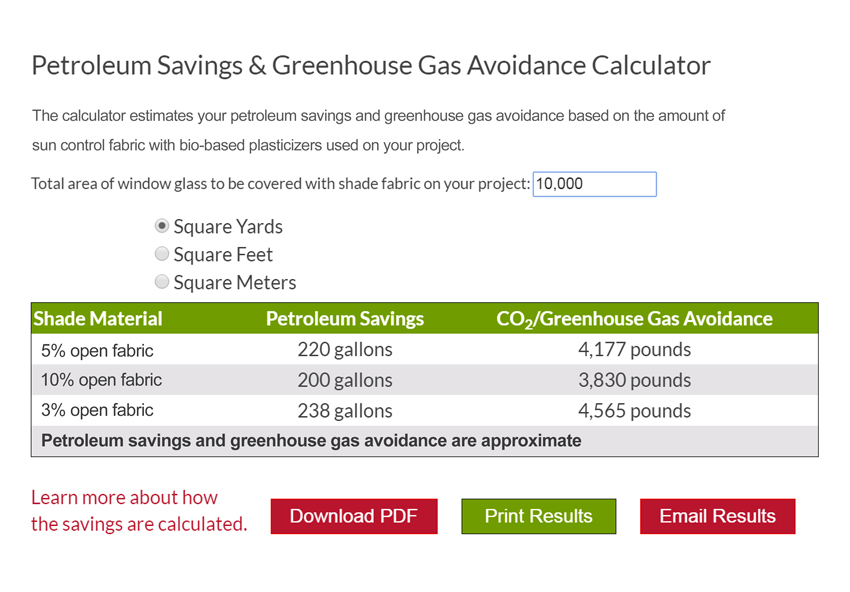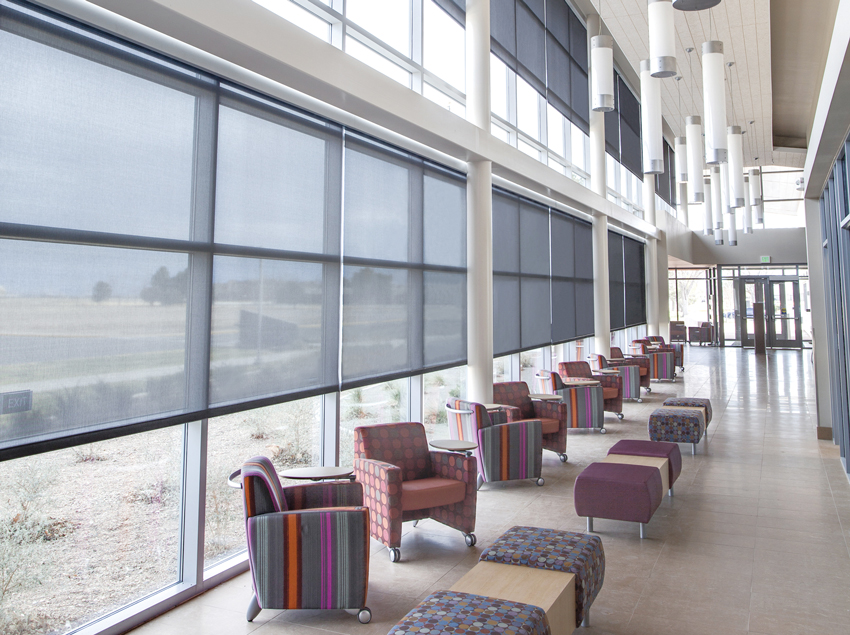Designing for Sustainability
Optimizing Heating, Ventilation, and Air-Conditioning Systems
Once all aspects of the building envelope are optimized, then selection of the equipment to provide heating, ventilation, and air-conditioning can take place. Traditional rules of thumb and even traditional system choices no longer apply in high-performance buildings that have very energy-efficient building envelopes. Instead, the HVAC systems need to be selected, sized, and installed in a manner that is consistent with what should be a dramatically reduced cooling and heating load. This is important for the most efficient and energy-saving operation of the building, but it is also important for the demonstration of energy use for LEED Energy and Atmosphere credits. Typically, earning points for energy use reductions is based on a computerized energy model. The right information needs to be entered into that model consistent with the building choices made and specified for the HVAC equipment and operation.
One type of system that has become appropriate to consider in many high-performance buildings is a heat pump that can be sized for individual spaces or zones or be connected to a multi-zone distribution layout. Further, to boost efficiency, the use of variable refrigerant flow (VRF) zoning systems has become increasingly popular. These systems control temperature by varying the amount of conditioned refrigerant supplied to a space rather than varying the amount of air as has otherwise been common.
VRF zoning systems use small refrigerant piping to deliver refrigerant directly to the zone that needs to be conditioned, providing more efficient and accurate temperature control in every zone. Because of the small piping and equally small, localized ductwork, VRF systems allow architects to design buildings without having to work around bulky trunks of ductwork. Further, technological improvements have made a two-pipe simultaneous cooling and heating system available, which significantly reduces the amount of refrigerant piping required, and makes the systems easier to design and install compared to a three-pipe configuration.
Unlike traditional HVAC systems that operate in a full-on or completely off cycle, VRF systems vary the compressor speed to provide the cooling or heating needed to maintain the set-point temperature. This technology and the use of effective zoning allows the units to operate very efficiently. As an added means of human comfort, zoning the system allows building occupants to control the temperature in their own space, which can lead to greater satisfaction with indoor temperatures. In recent years, these systems have evolved notably, with the latest VRF systems being the most efficient yet—improving energy efficiency by up to 54 percent over prior generations. They also offer a significant reduction in the required system refrigerant charge without impacting the efficiency of the system or comfort of occupants. Of course, all such systems will incorporate LEED-appropriate refrigerant management strategies.
Some people have incorrectly assumed that VRF zoning systems are significantly more expensive than traditional types of HVAC systems. However, when total life-cycle costs are considered, VRF is comparable to many traditional types of HVAC. The system design and installation are simplified, including reductions in the need for ductwork and, in some cases, the elimination of it. These systems also require minimal maintenance and long-term durability. Their efficient operation helps reduce energy costs when the building is occupied. Overall, VRF systems can save building owners significantly over the life of their HVAC system and building.

Photos courtesy of Mitsubishi Electric Cooling & Heating
Variable refrigerant flow (VRF) heat pumps offer designers of highly energy-efficient buildings a suitably sized and equally efficient HVAC system option.
Incorporating Sustainable Materials
LEED v4 has always included a significant portion of the rating system focused on the sustainable nature of Materials and Resources (MR). Earlier versions of LEED looked at some specific requirement to achieve points, such as the lack of ingredients harmful to human health (i.e., volatile organic compounds, or VOCs) and the embodied energy found in the travel distance between manufactured materials/products and the project site. LEED v4 takes a broader approach and seeks information about the full life cycle of materials and products, including extraction of raw materials, processing, transport, use, maintenance, and disposal/recycling. The specific credits in this MR category seek to reduce the embodied energy, environmental impact, and human health impacts of materials and products used in buildings. Each credit requirement helps identify a specific action that fits into the larger context of a life-cycle approach to reducing impacts.
The broader LEED v4 approach means that documenting creditworthiness in this category has changed notably. The design team is not expected to analyze every material or product, but those that produce them are. Hence, product manufacturers, trade associations, and independent agencies have the responsibility of producing reliable life-cycle information that the design teams can use to specify sustainable products and demonstrate LEED point eligibility. This becomes embodied in documents such as environmental product declarations (EPDs) or raw material sourcing and material ingredient information. In some cases, independent certifications are acceptable from other organizations that operate programs such as GreenScreen, Cradle to Cradle, or the European REACH program.
To demonstrate how this category might play out on a project, let’s use an example product. Imagine a sustainable building with a fair amount of glazing with the sunlight being controlled, in this case, by some interior-mounted sun control fabrics. This is a common choice, using motorized rollers to allow the fabric to act as a movable shade for solar heat and glare reduction, while still allowing natural daylighting and enhancement of outward views. That shade constitutes a significant area of material that is not only part of the indoor environment, but also a part of the environmental footprint of the building.
In looking to use this product as part of the MR credits for a LEED v4 building, it is worth realizing that the manufacturer of the shade material or the fabricator who weaves it probably doesn’t work directly with architects on their specific projects. Rather, they produce the fabric and formulate it into a usable format, while other companies create the complete shade systems that are then selected and specified by designers. It is incumbent on these manufacturing companies, then, to disclose the relevant information about their manufactured materials, their fabrication processes, and other technologies that go into the makeup of the completed products. In our solar fabric shade example, this might include disclosing the use of things like bio-based or petroleum-based plasticizers, antibacterial additives, recycled content, and recyclability at the end of its useful life. It might also include evidence of environmental certifications such as Cradle to Cradle and GREENGUARD.
Manufacturers who have had their products and materials regularly used on LEED projects are likely already on board with providing this information in formats that are becoming more standardized, such as EPDs. Bill Strickland, senior national market manager of Phifer sun control products, comments, “We entered this market in the 1980s and now have multiple products available with unique and innovative sustainable features that can be documented and certified.” Other companies may not be as experienced or fully up to date in providing sustainability information about their products. That means demonstrating LEED credit eligibility will be easier for some products than others. It also means that it will be important to follow the LEED-accepted process to break out the different elements and pieces of a system to optimize the sustainability of materials specified.
Continuing our solar shading example, once some potential products and materials are selected for consideration, they can then be compared based on the information provided by manufacturers. Some may be found to be free of PVC, making them attractive, but others may also be recyclable and made of recycled content, making them even more attractive and potentially more sustainable. Still others may include bio-based alternatives to petroleum and even document the calculations for how much greenhouse gas emissions are avoided by their material. That could be significant in terms of achieving a higher level of building certification, such as LEED Gold or Platinum, but could also help with more basic levels, such as LEED Certified Bronze or Silver. Of course, all of the materials and systems assessed still need to meet the core requirements of solar heat reduction to help with energy use optimization plus management of glare and views for indoor environmental quality. That is what holistic design is all about—every product or material in a building is there for a purpose that touches on other things in the building, making them related either in physical terms or operational terms. Good sustainable design is all about selecting the best combination of those products and materials to satisfy their intended purposes, while also falling within the parameters of minimizing the environmental, embodied energy, and human impacts.


Images courtesy of Phifer Incorporated
Pictured above is an example of environmental disclosure information for a solar shade fabric used in a sustainable building.
Glazing for Daylight, Views, and Occupant Comfort
Indoor Environmental Quality (EQ) is a LEED category that addresses human health and comfort in numerous ways, including thermal, visual, acoustic, and general health factors. One of the key elements of any interior space is the presence of natural daylight. Not only does it provide a sense of connection to the outdoors, it can reinforce our body’s natural circadian rhythms, and create much more inviting and pleasant spaces overall. Further, if designed in conjunction with proper controls, it allows for additional energy savings by switching off electric lights.
There is, of course, a challenge to address in naturally daylit spaces, namely the changing nature of the sun’s intensity and position across a day or the seasons. Too much direct sunlight at any point may result not only in excessive unwanted heat gain (which impacts energy performance), but also glare and discomfort on the part of the people in the space. Too little light, or light in the wrong location, and areas can appear under-lit and less than inviting. The solution to these challenges is found first in the design of the daylighting building features. The amount of unfettered daylight that is allowed to enter the building is a function of basic design decisions, such as building location, building shape, compass orientation, and glazing location. Exterior walls and roofs with glazed openings that orient toward the sun are the initial elements that need to be studied to see where and to what extent the daylight can potentially be effective.
The second key factor in daylighting designs is the means to control the amount of sunlight that is allowed through the glazing. In any given glazing condition, there will be times when having clear glass will be preferred to let most of the available daylight in. Then there will be other times when shaded or tinted glass will be preferred to block some or all of the sunlight with its corresponding heat and glare. Since most glazing can only be produced in one “static” condition of relative clarity or tint, some separate movable products, such as adjustable blinds or shades, are often installed to suit the changing daylight needs. However, an elegant and cost-effective alternative is to use “dynamic glazing,” which can change from clear to different shades of tinting through the use of specially coated glass that responds to a small electrical voltage. This coated glass is called electrochromic glazing (EC) and has been used very successfully in projects around the world.
With EC, the adjustability of the tinting gives architects the design flexibility that they need to relieve the tension between creating energy efficient buildings and having sufficient glass for the occupants to enjoy a daylit, comfortable space with expansive views to the outside. Because the solar and glare control is built into the glass itself, there is freedom to design more elegant, complex facades without taking a penalty on energy or comfort, and without the need for separate blinds or shades. Under USGBC LEED v4, electrochromic glazing can help provide sufficient glazed area to meet the daylight targets, yet control the glare so that the space is not over-lit or plagued by glare. It can also simultaneously help to achieve high energy performance by restricting solar heat that would otherwise increase air-conditioning loads or allow natural daylight to replace electrical lighting demand. All of this is further achieved by creating “zones” in the glass to allow more tinting in targeted portions of glass that may be more problematic for glare, with less tinting in other areas to admit more daylight where glare is not an issue. Zoning of the glass helps further optimize the balance between daylight, energy use, views, and light color.

Photos courtesy of SageGlass/Jeffrey Totaro, 2015
Electrochromic glass can change from clear (left) to become tinted in single or separate zones (four zones with different tint levels, three of which are within a single pane, shown on right) to suit changing daylight conditions.
Notice

www.efcocorp.com

MitsubishiPro.com/Ready

www.phifer.com/suncontrol/interior/product/
81/8000

SageGlass.com

www.technoform.us










